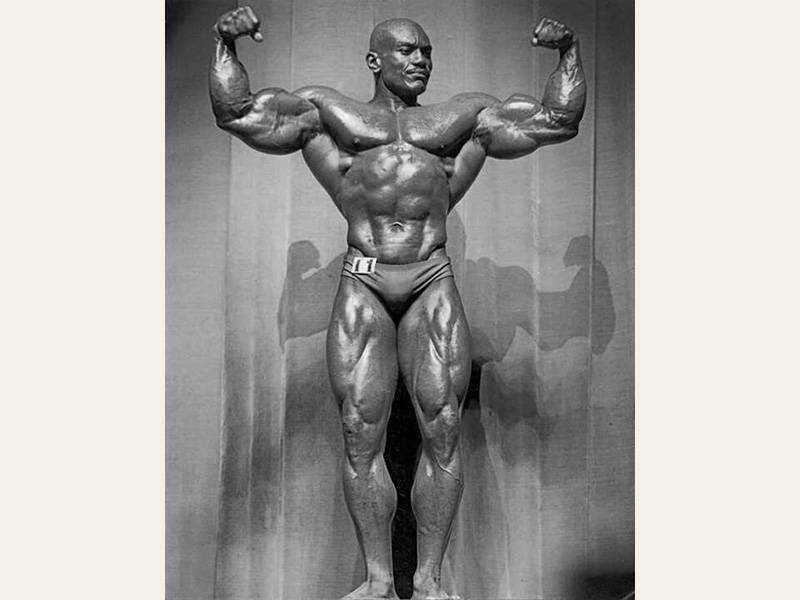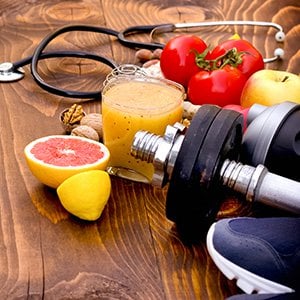
How to Calculate Macros: Step-by-Step Guide
Ever wonder how much protein you need to lose fat or build mass? What about carbs and fats? You already know that a balanced diet is the key to leanness, but what exactly should you eat to reach your goals?
When it comes to food, you can’t rely on guesswork. After all, there’s a reason why the fittest people plan their meals ahead and track their portions.
You see, calories are not everything.
What matters most is the amount of protein, carbs, and fats in your diet. These macronutrients provide the energy you need to function at your peak.
Whether you want to build mass, torch fat, or maintain your figure, you must learn how to calculate macros and plan your meals accordingly. This will bring you closer to your fitness goals and make it easier to stay lean. Plus, you’ll finally be able to eat like a king and still get ripped.
But what are macros anyway? Most importantly, why do they matter? Read on to find out!
What Are Macros?
Macronutrients, or macros, are the three major nutrients that our bodies require in large amounts. These include protein, carbohydrates, and fats. They serve as a source of fuel and play a key role in energy metabolism, hormone production, and other biological processes.

These compounds make up the caloric content of food and supply calories:
- 1 g of protein = 4 calories
- 1 g of carbs = 4 calories
- 1 g of fats = 9 calories
Another source of calories is pure alcohol. However, it’s not considered a nutrient because your body doesn’t need it to sustain itself.

Unlike protein, carbs, and fats, alcohol doesn’t serve a functional purpose. It actually inhibits the absorption and break down of certain minerals and minerals, such as zinc, folic acid, and thiamin.
Micronutrients, on the other hand, include vitamins, minerals, antioxidants, and so on. They are required in small doses and contain no calories. Each has a specific purpose and contributes to overall health.

Popular diet plans, such as the keto diet and IIFYM, rely on macros. Basically, you need to get the math right to make them work. For example, someone who wants to get big requires more carbs than those trying to lean out.
Your daily calories come from macronutrients. Get the right balance of these, and you’ll maximize your fitness potential while getting ripped. On top of that, you’ll gain a better insight into what foods support your goals and workout performance.
Macros — A Key Element of the Old School Bodybuilding Diet
Have you ever gone on a diet and had little or no results — or even gained weight? Then you know how frustrating it is to cut calories and eat clean without getting anything in return. Weight loss is all about calories in versus calories out, right?
Not really.
If it was that easy, you’d already be lean.
Now think about world-famous bodybuilders like Tom Platz, Arnold Schwarzenegger, Serge Nubret, or Samir Bannout — the Lion of Lebanon. They did a lot more than just count calories.

Serge Nubret, for example, had a strict diet plan consisting of 400 grams of protein and 9 pounds of meat per day, with very few carbs before competitions.
Sergio Olive, Tom Platz, and other popular athletes relied heavily on chicken, beef, and eggs back in the Golden Era. They didn’t fall for the latest nutrition trends or feared fat like most folks did. They knew how to manipulate carbs to get buff and recover faster from training while staying lean.

Platz, for instance, went from low carbs to high carbs (up to 300 grams a day!) for the 1980 Mr. Olympia — and this approach got him in the best shape of his life.
Old School Diet
The old school bodybuilding diet revolved around macros. Athletes were planning their meals well in advance and knew how to calculate macros for optimal results. None of them has ever won a title by resorting to crash diets and other passing fads.
Why Counting Macros Is the Key to a Better Body
Regardless of your goals, you need to get your macros right. Calories are only part of the equation. You can go on a low-calorie diet and gain weight, or increase your calorie intake and lose fat. That’s because not all calories are created equal.
500 calories worth of steak and sweet potatoes are not the same 500 calories worth of milk chocolate. Steak and sweet potatoes are a great source of protein and complex carbs, while chocolate contains nothing but simple sugars and trans fats.
Or let’s break down 500 calories worth of almonds vs. 500 calories worth of fries:

Almonds (1 cup):
- 546 calories
- 20.2 grams of protein
- 20.6 grams of carbs
- 47 grams of fat

French Fries (one large serving):
- 531 calories
- 6.4 grams of protein
- 65 grams of carbs
- 27.2 grams of fats
Now you see the difference. Compared to fries, almonds are three times higher in protein and three times lower in carbs. Plus, they’re loaded with monounsaturated fats, not trans fats.
Fad diets tend to focus on calories and ignore macros altogether. Think about crazy things like the cabbage soup diet, the 5:2 diet, or the blood type diet.
Weight Loss Plan Problems
These weight loss plans are notorious for their effects on metabolism, lean mass, and physical performance. They not only cause metabolic damage but also lead to muscle loss, fatigue, migraines, poor sleep, and nutrient deficiencies.

Sure, you could lose weight on a juicing diet, but a significant amount of that weight will be muscle.
The same goes when you’re trying to bulk up. You can definitely pack on pounds by binging on cookies and fries, but those pounds will be not lean mass. That’s why counting your macros is essential.
The Role of Protein
Protein, one of the three macronutrients, supports muscle growth and repair. It also plays a role in hormone and enzyme production, metabolic function, immunity, and more. A high-protein diet can make it easier to build mass and lose fat, recover faster from training, and keep your hormones in balance.

A 2017 study published in the journal Obesity Facts compared the effects of high-protein diets versus standard diets on body weight. Subjects who went on a hypocaloric diet rich in protein lost more weight than the other group.
This nutrient also increases satiety to a greater extent than carbs and fats. At the same time, it stimulates thermogenesis, which allows you to burn more calories throughout the day. In a 2005 clinical trial, overweight subjects who switched to a low-fat, high-protein diet reported greater satiety than those on a standard-protein, high-fat diet.
2019 Study Results
Another study, which appeared in Medicine & Science in Sports & Exercise earlier this year, shows that a dietary protein intake of 1.83 grams per kilogram of body weight per day may enhance athletic performance.

Surprisingly, consuming as much as 4.4 grams of protein per kilogram of body weight per day, which is 5.5 times more protein than the daily recommended intake (0.8 g/kg), doesn’t cause weight gain despite the increase in calories.
Researchers agree that athletes and active individuals need a lot more protein than the average person. The same goes for those recovering from injury or following low-calorie diets. As the Harvard Medical School points out, consuming up to twice the RDA of protein is safe and beneficial.

A high protein intake allows you to maintain lean mass and preserve muscle loss while on a diet. It also fuels your workouts, keeps your testosterone levels up, and puts your body into fat burning mode. Not to mention that you’ll feel less hungry and have better control over your appetite.
1. How to Calculate Macros: Protein
How much protein you need depends largely on your activity level and goals. Also, each diet plan involves different macronutrient ratios.
The ketogenic diet, for instance, requires moderate protein intake. In this case, eating too much protein can kick you out of ketosis.
When you’re on a low-carb or ketogenic diet, your body will turn to protein for energy. Limiting carbs and maintaining a moderate protein intake will increase your fat burning potential. A good range to aim for is 15% to 20% protein.
The Keto Diet
For example, if you’re on a 2,000-calorie keto diet, your protein intake should be 75 grams to 100 grams per day. In clinical trials, high-protein, low-carbohydrate ketogenic diets have been shown to suppress appetite, decrease food intake, and reduce body weight to a greater extent than high-protein traditional diets with moderate carbs.
However, the keto diet isn’t your only option. You can lose weight or build mass simply by adjusting your macros. Use an online macro calculator or determine your basal metabolic rate — and start from there.
Macros for bulking are different than macros for cutting. Likewise, you need to tweak your macronutrient ratios deepening on what results you’re after in terms of exercise performance, such as greater strength or endurance.
General Recommendations
Here are some general recommendations:
- Fat loss: 45-50% protein, 10-30% carbs, 30-40% fat
- Strength: 30% protein, 50% carbs, 20% fat
- Endurance: 15-20% protein, 45-50% carbs, 20-30% fat
- Hypertrophy: 25-35% protein, 40-60% carbs, 15-25% fat
- Maintenance: 25-35% protein, 30-50% carbs, 25-35% fat
Notice that protein never goes below 25% of total calories, except for endurance athletes who may need around 15% to 20% protein and more carbs than those training for strength, hypertrophy, or fat loss.
These numbers are not set in stone, though. You also need to consider your body type, workout frequency and intensity, activity level, and other factors.
A mesomorph, for example, may need more protein and fat and fewer carbs to get lean than an ectomorph. Mesomorphs tend to gain weight easily, while ectomorphs are naturally slender and have a difficult time building mass. Therefore, they have different nutritional needs.
The Role of Carbs
Now that you have a better idea of how to calculate macros, let’s talk about carbs. Contrary to what you may have heard, carbs are not evil. In fact, they fuel your gains and help replenish your glycogen stores after a challenging workout.
Carbohydrates are the body’s primary source of energy. After ingestion, they’re converted to glucose and used to produce ATP (adenosine triphosphate) — a molecule that transports energy within your cells. For this reason, ATP is often referred to as “chemical currency.” Every cell in your body needs this chemical to get the fuel needed to sustain itself.

As an athlete or aspiring bodybuilder, you need more carbs in your diet compared to the average person. These nutrients help reduce muscle breakdown and speed up the recovery process. They also provide energy for short, heavy exercise.
What do Bodybuilders Do?
Bodybuilders cycle their carbs to get in shape and maintain their figure. As the journal Sports Medicine points out, consumption of protein and carbs pre- and post-workout may help replenish muscle glycogen stores, reduce protein breakdown, and increase protein synthesis.

Researchers recommend ingesting around 1.2 grams of carbs per kilogram per hour every 30 minutes for four hours after training. They also suggest getting at least 60 percent of your daily calories from carbs in the off-season and pre-contest phases.
These nutrients support athletic performance and can give you a competitive edge. Not all carbs are created equal, though.

For best results, fill up on slow digesting carbs before hitting the gym and fast digesting carbs after training. Endurance athletes, on the other hand, can benefit from consuming simple carbs before and during exercise.
How to Calculate Macros: Carbs
Your carb intake will depend on your fitness goals, whether it’s fat loss, bulking, or maintenance. But what if you want to gain mass AND shed fat? In this case, you’re better off tackling one goal at a time.
In general, low-carb diets lead to fat loss, while higher carb intakes enhance mass gains. The keto diet, for example, can help you get shredded to the bone, but your gains and overall performance may suffer.
Sure, there are ways to address these issues and build mass on keto, but it’s not that easy. You need to stay in a caloric surplus (150 – 500 extra calories above maintained) while increasing your protein and fat intake.
CKD Diet and Carbs
Another option is the cyclical ketogenic diet (CKD), which alternates between high-carb and low-carb days. In this case, your carb intake will vary from one day to the next.
Most folks who use this approach stick to a standard keto diet (max. 50 grams of carbs a day) for five or six days per week and load up on carbs once or twice a week. The CKD typically requires the following macronutrient ratios:
- 60% fats
- 30% protein
- 10% carbs
High-carb days:
- 5-10% fats
- 15-20% protein
- 70% carbs
What does science say?
A 2017 study published in The Journal of Physiology indicates that low-carb, high-fat diets increase fat burning during exercise but affect sports performance. Athletes who loaded up on carbs before training performed better than those following a standard keto diet.
Furthermore, ketogenic diets have been shown to impair glucose tolerance and suppress insulin production, making it harder to build and preserve lean mass. Considering these findings, it makes sense to have a refeed day every now and then.
If you’re not a fan of the keto diet, you can always use carb cycling.
This dietary pattern involves varying your carb intake on a daily or weekly basis to keep your metabolism up and prevent plateaus. When done right, it helps maintain and improve physical performance, promotes muscle growth and facilitates fat loss.
The Role of Fats
Like carbs and protein, dietary fats supply energy and support a number of biological functions. They contribute to nutrient absorption, hormone production, cell growth, temperature regulation and more. When your glycogen stores are low or depleted, your body can use fats to sustain itself.

Some types of fats, such as Omega-3s, fight inflammation and promote cardiovascular health. Others aid in the absorption of fat-soluble vitamins. These nutrients also assist in the formation of myelin, a substance that surrounds and protects your nerve cells.
Omega-3 and omega-6 essential fats are particularly important for athletes. Maintaining a healthy balance between the two may help prevent obesity and weight gain, delay fatigue, accelerate recovery, and enhance stamina.
Clinical Science Study
According to a 2012 study featured in Clinical Science, omega-3s stimulate muscle protein anabolism in healthy young and middle-aged adults as well as those who are prone to muscle loss. Furthermore, they support cardiovascular function and reduce inflammation.

These fatty acids also increase protein synthesis and help preserve lean mass. Some studies suggest that they may improve muscle function when combined with resistance training.
Make sure you choose a supplement that offers the perfect balance of omega-3s, omega-6s, and omega-9s. This will ensure that you get the most out of your diet, build quality mass, and reach your fat loss goals.

Try Vintage Balance™ from Old School Labs — it delivers all of the essential omega fatty acids you need to function optimally. Our formula supports cardiovascular and brain health, keeps your joints strong, and supports a healthy body composition.
How to Calculate Macros: Fats
How much fat you need depends on your diet and fitness goals. The keto diet will obviously be higher in fats than Atkins, for example.
Start by figuring out your daily protein intake. Next, determine your carb requirements. The rest of your calories will come from fats.
According to the Food and Nutrition Board of the Institutes of Medicine, typical macro-nutrient ratios are as follows:
- 10-35% protein
- 20-35% fats
- 45-65% carbs
However, these numbers will vary based on what diet plan you’re on. In general, high-fat diets are low in carbs, while high-carb diets limit fats.
Macros = No Hard Rules
As you see, there are no set rules on how to calculate macros. It all comes down to your individual needs.

Start with a classic ratio like 40% protein, 40% carbs, and 20% fat (40/40/20), and go from there. If you’re feeling hungry all the time, add more protein to your diet. If you’re low on energy, increase your fat intake. Cut down on carbs if you’re struggling with a weight loss plateau.
In the meantime, check out our step-to-step guide to shredded abs! We’ll show you exactly what you need to do to lose the flab and make your abs pop. For faster results, try Vintage Burn™, our signature fat burner that will skyrocket your metabolism!











